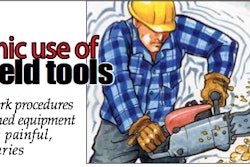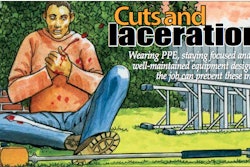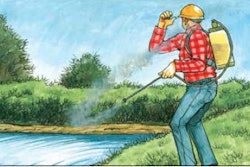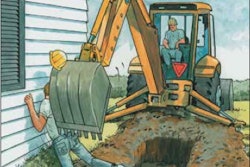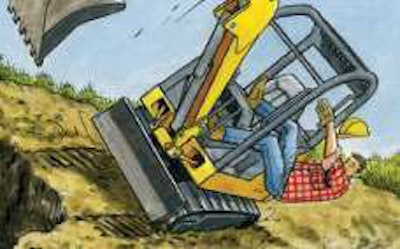
13 important rules to avoid injury and equipment damage
The accident: A 34-year-old landscape worker operates a mini-excavator horizontally on an uneven, muddy slope of a residential neighborhood where a crew is installing a pool. When he drives too close to the edge of a drop-off, the excavator slips and tips onto its side, and pins him underneath. The equipment crushes both of his legs, and he suffers multiple cuts and lacerations.
The bottom line: The worker should not have operated the excavator across a slope, and the muddy conditions and uneven terrain contributed to the danger. In addition, his serious injuries may have been prevented if he had worn his seatbelt.
Follow these recommendations to reduce your risk of a serious accident:
• Never operate equipment if you are impaired by medications (prescription and over-the-counter medications), drugs or alcohol.
• Plan before you dig. This includes calling ahead regarding overhead and underground utilities, along with evaluating terrain and slope.
• Check the work area for location of steep slopes, slide areas, drop-offs and overhangs.
• Wear appropriate personal safety equipment including high-visibility clothing, work boots, gloves, hard hat, safety glasses, hearing protection and a respirator or filter mask if needed.
• Avoid traveling across a slope; always travel up and down the incline. Make sure there is adequate traction on slopes.
• Create a level work area if you need to operate in a cross-slope direction.
• Lower the blade to provide additional stability for the machine.
• Properly enter and exit machine; use grab handles, steps or safety treads.
• Never modify equipment or remove the tip-over or roll-over protective structure.
• Keep the heavy roll-end of the machine pointed uphill on slopes.
• Keep loads as low as possible.
• Never exceed the rated lift capacity.
• Always fasten your seat belt.
Safety quiz
• Have you been trained in the proper use of the equipment you are assigned to operate? If English is not your first language and you don’t fully understand your training, your employer is required to provide training in your native language.
• Are you following manufacturers’ specifications and recommendations per the operator’s manual?
• Can you clearly identify all machine controls and have you made sure safety features are working?
• Do you make frequent visual inspections of quick-disconnect systems – especially after changing attachments?
(Information provided by NIOSH and Shawn Warkenthien, product safety manager for Bobcat Company.)


